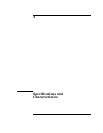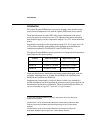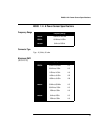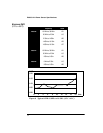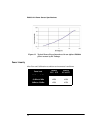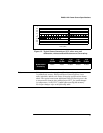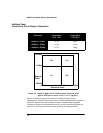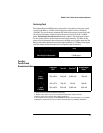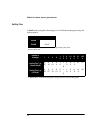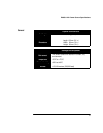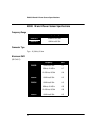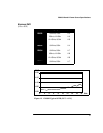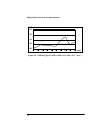
E9300/1/4/A Power Sensor Specifications
39
Switching Point
The Agilent E-series E9300 power sensors have two paths, a low power path
covering -60 dBm to -10 dBm, and a high power path covering -10 dBm to
+20 dBm. The power meter automatically selects the proper power level path.
To avoid unnecessary switching when the power level is near the -10 dBm
point, Switching Point Hysteresis has been added. This hysteresis causes
the low power path to remain selected until approximately -9.5 dBm as the
power level is increased, above this power the high power path is selected.The
high power path remains selected until approximately -10.5 dBm as the signal
level decreases, below this power the low power path is selected.
Zero Set,
Zero Drift and
Measurement Noise
Error
Offset at Switch Point ≤±0.5% (≤±0.02 dB) typical
Switching Point Hysteresis 0.5 dB typical
Conditions
(RH)
1
1. RH is the abbreviation for Relative Humidity.
Zero Set
Zero Drift
2
2. Within 1 hour after zero set, at a constant temperature, after a 24 hour
warm-up of the power meter with sensor connected.
Measurement
Noise
3
3. The number of averages at 16 for Normal mode and 32 for x2 mode, at a constant
temperature, measured over a one minute interval and two standard deviations.
Lower Range 15% to 75% 500 pW 150 pW 700 pW
(-60 to -
10 dBm)
75% to 95% 500 pW 4,000 pW 700 pW
Upper Range 15% to 75% 500 nW 150 nW 500 nW
(-10 to
+20 dBm)
75% to 95% 500 nW 3,000 nW 500 nW



